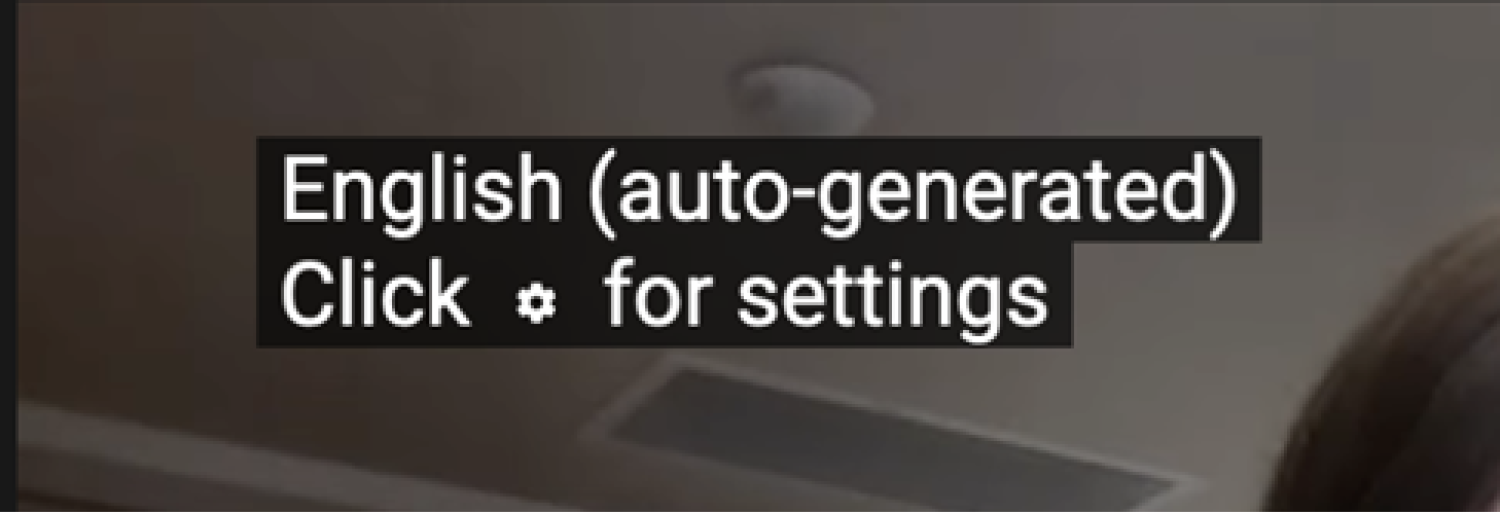Accessibility Minute - October 2021
What are Post-Production Captions?
You are likely familiar with captions—timed transcriptions of audiovisual content that appear as a video plays. You likely also know that captions are generally aimed to benefit people who are d/Deaf or hard of hearing.
But did you know that there is a difference between live and post-production captions? Live captions refer to captions that are created in real-time during a live event. So if you are a student receiving captions while attending a lecture or a theater patron receiving captions during a show, you are receiving live captions.
Post-production captions, on the other hand, are captions for a video that has already been recorded. When you’re watching a TV show or a movie, the captions that will appear are post-production captions, since the video was recorded long before it was broadcast to your device.
Why does this matter? There are different policy and accuracy requirements for live captions and post-production captions. Furthermore if you’re creating captions yourself, there are different workflows that you can use depending on whether you want live captions or post-production captions.
Our March newsletter covered live captions, and this month we’re going to cover the other half by diving into post-production captions.
Why Are Captions Important?
They provide essential access for some individuals with disabilities, such as people who are d/Deaf or hard of hearing or people with an auditory processing disorder.
They improve access for many individuals with and without disabilities, such as people for whom English is not their first language, people in noisy environments, and more.
They are required in certain cases and encouraged in all cases under CU Boulder’s campus digital accessibility policy standards.
How Should I Make Post-Production Captions?
It’s important to start with a discussion of accuracy requirements for post-production captions. Post-production captions should be very accurate, which is generally interpreted to be greater than 99% accuracy. (Live captions, in contrast, are understood to be less accurate because there isn’t time to fully correct errors as they are created.)
There are generally two approaches you can take when creating captions: letting a computer generate them (known as automated captioning), or having a human create them (known as manual or human captioning). However, most automated captions are not at least 99% accurate, so they shouldn’t be used when captioning accuracy is important.
At CU Boulder, post-production captions on all recorded videos that are public-facing or are being captioned in response to an accommodation request must be created or edited by a human to ensure that they meet that 99%+ level of accuracy.
That’s not to say you can’t use automated tools as part of the process! Many people find that using YouTube or Canvas Studio’s automated captions are a great way to jumpstart the process of creating captions. Read more about how to create captions on your own.
(Tip: If you’re not sure whether captions on YouTube are automated or human-edited, check the name of the captions. If a pop-up that says “English (auto-generated)” appears when you turn the captions on, then those captions have not been human edited and should not be used to meet accommodations or on public-facing videos.)

You can also pay a vendor to caption your videos for you. Post-production captioning starts at $1.25/min and you can submit the captioning request form for support. Captioning requests are generally paid for by your department unless there is a formal accommodation request, in which case the university pays for captioning. For questions about captioning, reach out to captioning@colorado.edu.
October Challenge
Caption a video! Find or record a short video with no captions and follow the steps in the automated captioning tools resource to create automated captions in Zoom Cloud, Canvas Studio, or YouTube. Then review the Captioning Quality Guidelines and edit the automated captions for accuracy. (If you don’t own the video, you can still create captions from scratch on Amara.org.)
Your Thoughts
We want to hear from you about any questions or issues you run into while trying out this accessibility practice this month! Please send us your thoughts on this month’s topic.
If you have questions or comments, or would like support with accessibility, please contact us at DigitalAccessibility@Colorado.edu.

